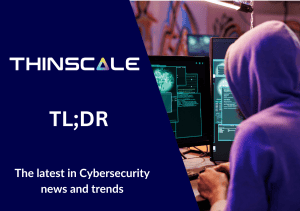Endpoint security is a crucial aspect of any organization’s overall cybersecurity strategy. Laptops, desktops, and mobile devices, are the entry points to an organization’s network.
This makes them vulnerable to cyberattacks. They are most common attack vector for cybercriminals, using brute force and phishing to exploit weak points.
Systems admins are usually on the frontlines when it comes to security.
10 Ways to Reduce Endpoint Security Risks
1. Enforce Strong Password Policies
One of the most effective ways to reduce endpoint security risks is to implement and cruciall, enforce, strong password policies. This means requiring users to create strong, complex passwords that are difficult to guess.
Employees should be educated on how to choose a password. And given a nudge to change them every so often.
2. Regularly Update Software and Applications
Out-of-date software is a common backdoor into the network. So a patch management strategy that keeps your systems smoothly is essential.
As a systems administrator, you should ensure that updates are installed on all devices that might be used to access coporate resources.
3. Endpoint Management Software
Very often, IT teams are reliant on individual employees themselves to manually update apps and take other necessary actions at the device level. This is particularly common when managing WFH and BYOD deployments. By utilizing dedicated endpoint management software, IT teams can automatically roll out and enforce patches and updates, as well as enforce strict endpoint access controls.
ThinScale has become the number one choice for Systems Admins and IT teams for efficient endpoint management, even when dealing with BYOD or untrusted third party devices that need access to the corporate infrastructure.
4. Endpoint Security Software
Many organizations rely on a combination of antivirus and network security tools. However, it’s important to understand that these do not protect against some of the most common threats to the endpoint, like screen-scrapers and key-loggers.
This is why we recommend a dedicated endpoint security solution is a key part of your stack, offering you protection against threats at the device level. Learn more about ThinScale’s endpoint security solution.
5. Antivirus and Anti-Malware Software Is Not Enough
Antivirus protects endpoints from malware and viruses.
IT security teams will know, however, that an antivirus tool can be vulnerable to zero-day threats, which are unknown and not stored in the vault of recognized threats. For this reason, solutions like ThinScale’s Application Execution Prevention feature are increasingly popular, as they stop all unknown and unauthorized programmes from running on the endpoint.
6. Control Endpoint Access
Endpoint access control is an essential aspect of endpoint security. Limiting who has access to endpoints can significantly reduce the risk of cyberattacks. Consider implementing user access controls and privileges to limit access to sensitive data and critical systems. Also, where possible, ensure that endpoints are physically secure by implementing measures such as lockable cabinets, security cameras, and even tracking software in the event of theft or loss.
However, using software like ThinScale would enable you to revoke access and even remotely wipe corporate data from the device in such an event.
7. Encrypt Endpoint Data
Encrypting endpoint data is an effective way to protect sensitive information from unauthorized access in the event of a breach.
8. Implement Endpoint Backup and Recovery Plans
Endpoint backup and recovery plans are essential to ensure that critical data can be restored in the event of loss.
9. Monitor Endpoint Activity
Monitoring endpoint activity can help detect and prevent cyberattacks. Consider implementing endpoint monitoring solutions that can detect abnormal activity, such as unauthorized access attempts, malware infections, and suspicious network traffic.
Regularly review endpoint logs and monitor for any signs of compromise.
10.Train Users on Endpoint Security Best Practices
Endpoint security is not just the responsibility of systems administrators but also the end-users. Users must be educated on endpoint security best practices, such as identifying phishing emails, avoiding public Wi-Fi, and protecting passwords.
Conduct regular training sessions for end-users to ensure that they are aware of thedangers, can identify a phishing email, and know how to protect themselves and the organization.
Make Endpoint Security Easier with ThinScale
Reducing endpoint security risks is critical to protect an organization’s valuable data and resources. As a systems administrator, you play a vital role in implementing effective endpoint security measures.
ThinScale is the perfect solution for systems admins and IT teams who need to manage and secure a large number of devices, especially for decentralized or distributed workforces.



